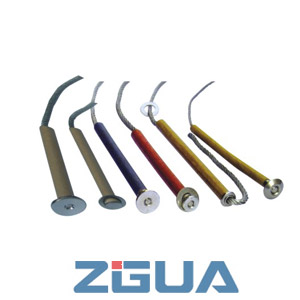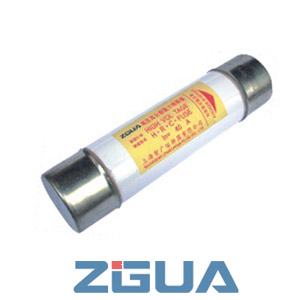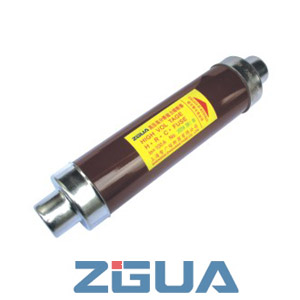In the process of using electricity, it is often heard that the fuse is broken, so what is the material of the fuse? What if the fuse burns? What is the reason for the fuse to blow? How to replace the fuse? How to choose the specification of the fuse? The characteristics of the fuse, and the fuse supplier will take you to see the relevant knowledge immediately.
What is the material of the fuse?
The fuse belongs to the metal wire material, which is mainly made of gold wire and other low melting points and financial. When the circuit is faulty and abnormal, the current will continue to rise at this time. During the process of rising, the current will damage the circuit, and even cause a fire in severe cases.
If a fuse is installed in the circuit, when the current problem is abnormal and has reached a specific height and heat, the fuse can fuse itself to cut off the current, protecting the circuit and operating safely.
What should I do if the fuse is blown?
1. If there is a short-circuit fault in the electrical circuit at home, we need to eliminate the fault first, and then replace it with a new fuse.
2. If it is caused by excessive electricity load at home, after replacing the fuse, reduce the number of household appliances used, especially those with high power.
3. If the above two fault causes are eliminated, it is likely to be a problem with the air switch, just replace the air switch with the corresponding capacity.
What is the reason for the blown fuse?
1. Thin fuse
Solution: 30A fuse or fuse can be selected.
2. There are loose or oxidized places on the line or switch.
Solution: Carefully observe whether the terminal of the knife switch is oxidized, and fasten all the terminals with a screwdriver, including the screws at both ends of the safety plate. If the above two points are achieved and the fuse is still burned, you should check whether the line connector is firm, whether the socket and the line are tightened, and whether the socket is qualified.
3. Overload: The household electricity load is too large, causing overload and blowing the fuse. This situation is especially easy to occur when using air conditioners, electric heaters, or adding other high-power electrical appliances.
4. Poor contact: In some families, although the fuse is selected reasonably and the load is not too large, it will trip when using air conditioners, electric heaters, rice cookers, and other large-power appliances. The reason may be that it is installed 1. When replacing the fuse, the fuse is in poor contact with the plug screw, which causes ignition and heat, and oxidizes and burns the screw fixing the fuse on the porcelain plug and switchblade".
5. Short circuit: If the fuse is replaced, it will trip as soon as it is closed, it may be a short circuit. The first is the short circuit of the line. The second is the short circuit of the load, such as electric kettles, rice cookers, and other commonly used larger power appliances and commonly used The plugs of mobile appliances and low-quality appliances are prone to short-circuit failures.
6. Pulse: When the circuit is started or the power supply is unstable, an instantaneous high current causes the fuse to disconnect; in addition, the screw is not tightened when the fuse is installed, or the fuse is damaged, which will also cause the fuse to blow.

The fuse supplier tells you how to replace the fuse
The first step is to cut off the power supply at home to ensure that the operation is in a state of no electricity, so as to ensure the safety of the operator.
Then prepare the appropriate fuse. Use a screwdriver to unscrew the fuse screw that needs to be replaced. Note that it is not necessary to unscrew it completely, just ensure that there is a thickness of the fuse. Finally, connect the prepared fuses and tighten the screws. After confirming that it has been fixed, the fuse is replaced. Then turn on the switch and try to see if the power consumption is in a normal state.
How to choose the specification of the fuse
Automobile fuse specifications, plug-in type can be divided into super small plug-in fuse, small car fuse, medium car fuse, large car fuse, rated current from 1-40 amps to large 30-120 amps, rated voltage 32 volts; fork bolt type can be divided into small fork bolt fuse, large fork bolt fuse. The rated current is from 30-150 amps to 40-800 amps, and the rated voltage is 32/125 volts.
Features of the fuse
1. Main features of fuses
1) The selectivity is good. As long as the rated current of the fuse link of the upper and lower fuses meets the requirement of the overcurrent selection ratio of 1.6:1 stipulated in the national standard and IEC standard, that is, the rated current of the upper fuse link is not less than 1.6 times the value of the lower fuse. It is considered that the upper and lower levels can selectively cut off the fault current;
2) Good current limiting characteristics, high breaking capacity; relatively small size; cheap price.
2. The use characteristics of the fuse
1) The fuse must be replaced after the fault is blown;
2) The protection function is single, there is only one section of overcurrent inverse time limit characteristic, overload, short circuit, and ground fault are all protected by this;
3) When one-phase fusing occurs, the three-phase motor will lead to adverse consequences of the two-phase operation, of course, it can be compensated by a fuse with an alarm signal, and one-phase fusing can disconnect three phases;
4) Remote control cannot be realized, it needs to be combined with an electric knife switch and switch to be possible.
Protective features of fuses
The protection characteristic of the fuse can also be called the melting characteristic, which is the main characteristic of the fuse. The melting characteristic characterizes the relationship between the current passing through the melt and the melting time of the melt. It is the same as the protected characteristic of the thermal relay, which is inversely time-limited.
In the protective characteristics of the fuse, there is a dividing line between the fusing current and the non-fusing current, and the corresponding current is the minimum melting current IR. It is such a current value that when the current passing through the melt is equal to it, the melt should never be fused under the rated current, so IR>Ie.
The ratio of the minimum melting current to the rated current of the melt is called the melting coefficient β, which is an index that characterizes the sensitivity of the fuse protection when it is overloaded in small multiples. From the point of view of overload protection, β is small, which is beneficial to small multiple overloads. For example, from the point of view of overload protection of cables and motors, the value of β should be between 1.2 and 1.4. If the β value is small enough to be close to 1, not only the working temperature under the melt Ie will be too high, but also the phenomenon that the melt may also be fused under Ie due to the error of the ampere-second characteristic itself, which affects The reliability of the fuse work.
The melting coefficient is mainly determined by the material and working temperature of the melt as well as its structure.
The fusing time of a fuse is the sum of the melting time and the arcing time. In the case of small multiple overloads, the fusing time is close to the melting time, and the arcing time is often negligible, so the melting characteristic is also the pre-arc current-time characteristic of the fuse.
It should be pointed out that due to the change in the composition of the melt material, the deviation of the melt size and the change of its surface state and cooling conditions, the poor contact of the fuse, and the change of the temperature of the surrounding medium, the fusing time also changes, so that the protection curve of the fuse Unstable, forming a band with a 10-20% error. In this way, it is possible to fuse under Ie, but not to fuse when a small multiple is overloaded. Fuse suppliers warmly remind us that this should be fully noticed when installing and using fuses.
Well, that’s the end of today’s fuse supplier introduction. We can see from the above article that the fuse supplier introduces the fuse material, the cause of the fuse blown, the replacement of the fuse, the specifications and characteristics of the fuse, and the solution to the burnt fuse.







